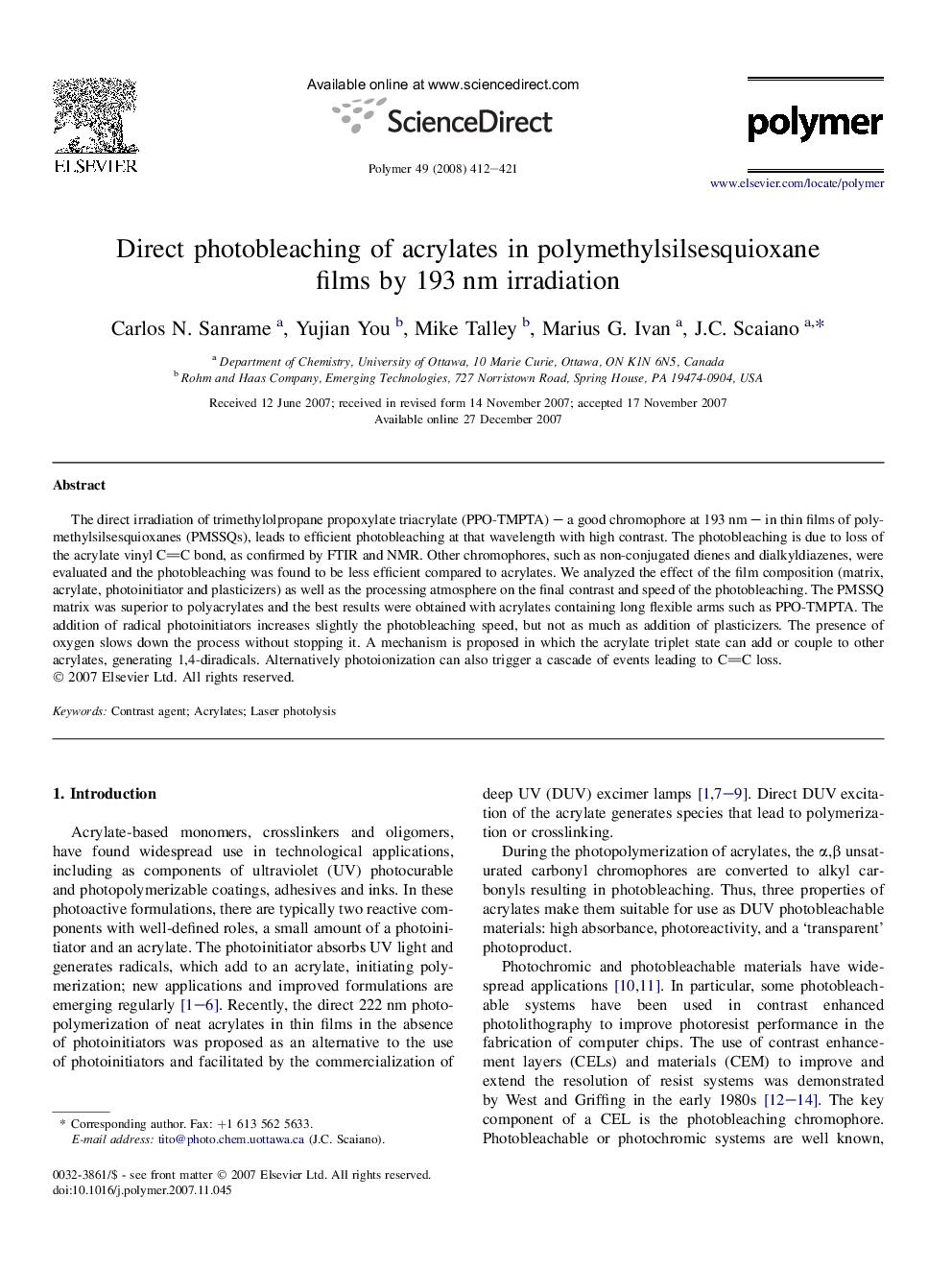| کد مقاله | کد نشریه | سال انتشار | مقاله انگلیسی | نسخه تمام متن |
|---|---|---|---|---|
| 5185585 | 1381082 | 2008 | 10 صفحه PDF | دانلود رایگان |

The direct irradiation of trimethylolpropane propoxylate triacrylate (PPO-TMPTA) - a good chromophore at 193Â nm - in thin films of polymethylsilsesquioxanes (PMSSQs), leads to efficient photobleaching at that wavelength with high contrast. The photobleaching is due to loss of the acrylate vinyl CC bond, as confirmed by FTIR and NMR. Other chromophores, such as non-conjugated dienes and dialkyldiazenes, were evaluated and the photobleaching was found to be less efficient compared to acrylates. We analyzed the effect of the film composition (matrix, acrylate, photoinitiator and plasticizers) as well as the processing atmosphere on the final contrast and speed of the photobleaching. The PMSSQ matrix was superior to polyacrylates and the best results were obtained with acrylates containing long flexible arms such as PPO-TMPTA. The addition of radical photoinitiators increases slightly the photobleaching speed, but not as much as addition of plasticizers. The presence of oxygen slows down the process without stopping it. A mechanism is proposed in which the acrylate triplet state can add or couple to other acrylates, generating 1,4-diradicals. Alternatively photoionization can also trigger a cascade of events leading to CC loss.
Journal: Polymer - Volume 49, Issue 2, 21 January 2008, Pages 412-421